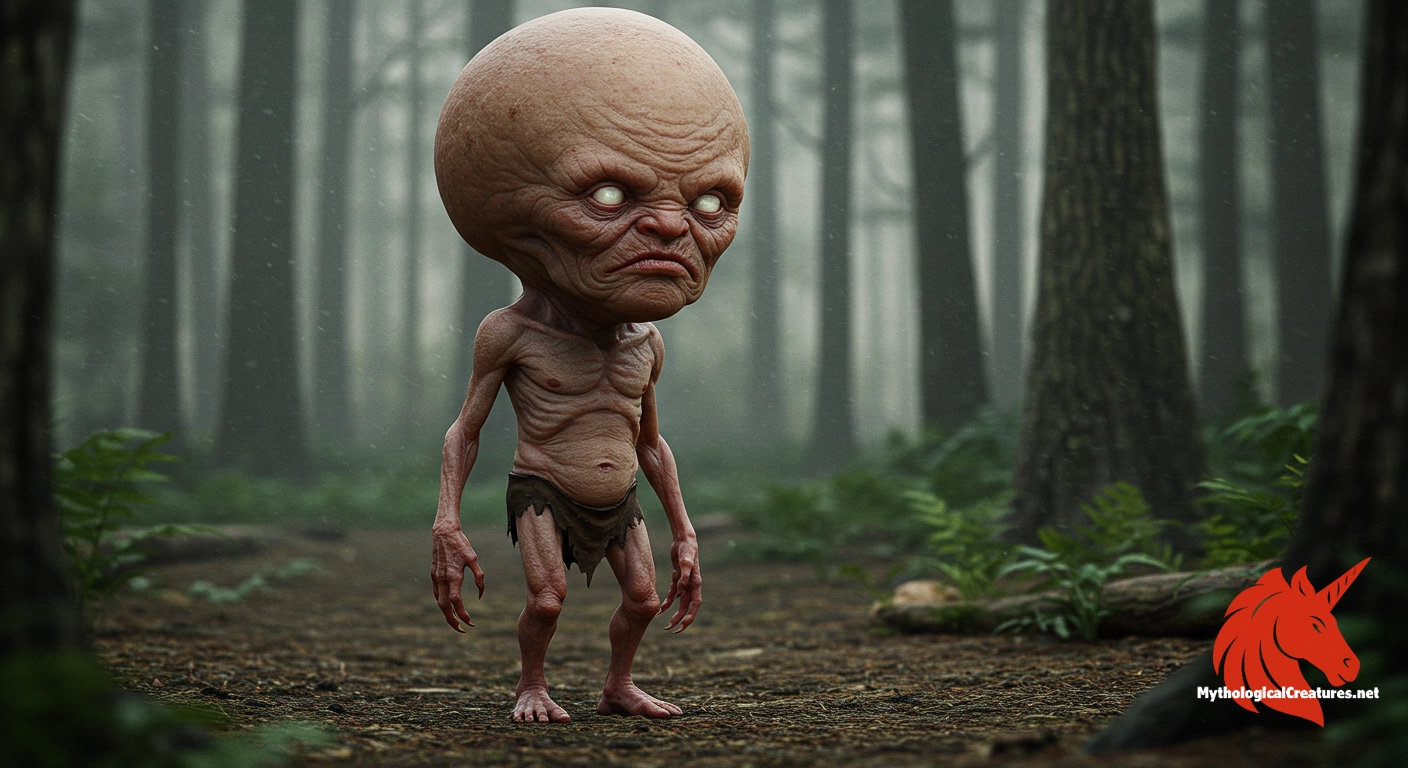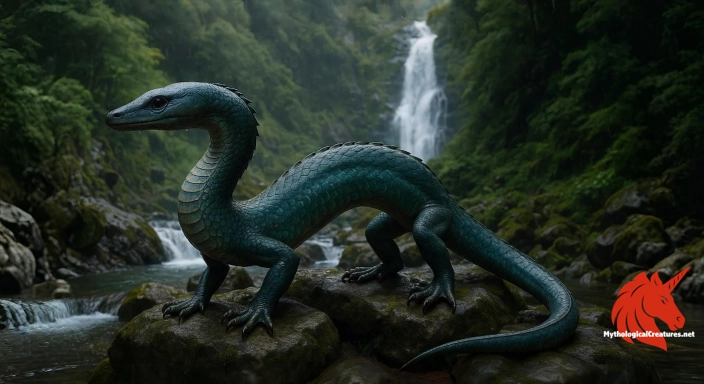Melon heads: Melon Heads are small, deformed humanoids from American urban legends known for their bulbous heads and hostile behaviour.

Melon heads
Melon heads - Melon Heads serve as cautionary figures in regional ghost stories and symbolize the unknown terrors lurking in isolated communities.
Origins & First Encounters
In a shadowy corner of American folklore, the melon heads have long held a reputation as mysterious beings whose origins are as debated as their unsettling appearance. Tales from Ohio, Michigan, and Connecticut paint them as small humanoids with disproportionately large, bulbous heads that lend them an almost otherworldly presence. Their legends have trickled down through generations, blending whispered local lore with the eerie ambience of abandoned rural landscapes. Some narratives suggest these creatures emerged as the unintended consequences of supernatural curses or tragic experiments, while others propose that their deformations mark them as cursed souls. The ambiguity of their beginnings, intertwined with local superstition, has granted the melon heads a captivating, enduring allure. Their sporadic, aggressive appearances in remote and hidden locales compound the sense of dread that surrounds them. As the legends evolved, so too did the varied interpretations of their role in the natural and spiritual world. Over time, these enigmatic beings have come to embody the fears and uncertainties of isolated communities, standing as a potent symbol of nature’s darker, unexplained mysteries.
Source Texts & Tale Variants
Eyewitness accounts, local newspaper clippings, and oral traditions form the primary patchwork of evidence behind the melon heads legend. Fragments of these reports, dating back several decades, have been compiled by independent folklore enthusiasts who seek to preserve the authenticity of regional narratives. Individual stories often diverge in details, with some witnesses describing close and chilling encounters while others recount fleeting, shadowy figures glimpsed at a distance. The scarcity of official documentation only adds to the legend’s mystique, with local historians piecing together anecdotes to form a broader narrative. Variations in the story abound, some linking the melon heads to secretive experimentation while others hint at ancestral curses. Community gatherings and folklore societies have played a pivotal role in collecting and comparing such accounts over time. The inconsistent details across sources invite curiosity and further speculation regarding the true nature of these beings. Despite the limited written records, the rich tapestry of oral tradition continues to keep the legend alive, ensuring that each new retelling adds another layer to the myth. These multiple sources, though fragmented, collectively showcase the evolving character of the melon heads myth.
Form & Powers
Descriptions of the melon heads are as varied as they are chilling, with most accounts converging on the image of a small humanoid defined by an oversized, bulbous cranial structure. The beings are said to stand only three to four feet tall, a stature that accentuates the dissonance between their tiny bodies and their disproportionately large heads. Their heads, often depicted as round and misshapen, are described as smooth yet marred by the suggestion of deep grooves and creases. Witnesses have noted unusually sunken eyes that seem to glow in the darkness, intensifying their eerie allure. The skin of these creatures is frequently portrayed as pallid or grey, giving them a spectral appearance that echoes the pallor of ghostly legends. In some narratives, sparse or entirely absent hair further highlights the abnormal shape of their craniums. Limbs, though small and delicate in proportion, are sometimes portrayed as unexpectedly robust, imbuing an almost inhuman strength. The overall physical depiction creates a powerful visual contrast that encapsulates both vulnerability and latent menace. This unique amalgam of deformed features establishes the melon heads as unforgettable figures in the annals of folklore.
Regional Faces
The legend of the melon heads has absorbed regional flavours that differ subtly from one community to another across Ohio, Michigan, and Connecticut. In Ohio, the narrative is often set against the backdrop of isolated farmlands and abandoned buildings, where local residents speak of the creatures as remnants of a bygone era fraught with dark secrets. Michigan’s versions of the tale tend to evoke the mysterious depths of dense forests, with accounts highlighting unexpected encounters on fog-laden country roads. In Connecticut, the stories sometimes take on a more tragic tone, weaving in elements of ancestral curses and modern misfortune that haunts small towns. Local topography, historical events, and even regional dialects have influenced the way the melon heads are described and feared. Communities have tailored the myth to reflect local anxieties, often linking the creatures to unexplained disappearances or eerie environmental phenomena. Seasonal folklore and annual ghost tours in these regions have further cemented the melon heads as part of a shared cultural heritage. Despite regional differences, a common thread of lurking menace and unexplained abnormality runs through every version of the tale. These variations underscore the flexibility of folklore, where each community adapts the myth to resonate with its own historical and environmental context.
Cultural Parallels
The melon heads share intriguing similarities with various deformed or otherworldly beings found in global mythologies. Much like European tales of malformed goblins or cursed forest-dwellers, their aberrant physical traits serve as a potent symbol of nature’s unpredictable deviations. Across different cultures, stories of disfigured humanoids often function as cautionary tales or metaphors for societal taboos, a role the melon heads also seem to fulfil. There is a compelling parallel between the unsettling image of these creatures and the broader mythological motif of punishment or retribution manifesting as physical deformity. Similar mythical entities, whether in the form of shadowy spectres or diminutive figures with large heads, can be found peppering the folklore of regions as diverse as Scandinavia and the British Isles. This cross-cultural comparison highlights a universal human tendency to explain the inexplicable by projecting monstrous traits onto those who seem different. The melon heads, therefore, stand as a uniquely American iteration of a broader mythic archetype that spans continents. Their prominence in local lore is reflective of a wider narrative tradition in which physical anomalies are imbued with mystical significance. In examining these connections, it becomes clear that the melon heads are part of a larger tapestry of myth, where deformed beings serve as metaphors for the fears and uncertainties of the human condition.
Legacy & Modern Evolution
The evolution of the melon heads legend mirrors the broader shifts in the way folklore is adapted and reinterpreted over time. What once were whispered stories shared around campfires have now found new life in modern media, from television programmes to online paranormal forums. Contemporary portrayals often blend elements of horror with a nuanced sense of tragedy, suggesting that these beings are not merely malevolent monsters but also victims of a distorted fate. The legend has been embraced by local communities, sometimes inspiring ghost tours, festivals, and even niche art installations that celebrate its eerie mystique. As modern communication channels have broadened the audience, the melon heads myth has increasingly intersected with popular culture, influencing horror films and digital storytelling platforms. This transformation from isolated folklore to a broadly recognised urban legend is a testament to the enduring allure of the unknown. While some purists argue for a return to the original, darker narratives, many contemporary adaptations have softened the edges, sometimes even invoking a sense of empathy towards these enigmatic figures. The contemporary legacy of the melon heads is a dynamic blend of fear, fascination, and creative reinterpretation, ensuring that the myth remains as relevant today as it was in its earliest retellings.
Interesting Fact
An intriguing aspect of the Melon Heads legend is the diverse range of origin stories, with some attributing their creation to genetic deformities while others claim a supernatural curse, highlighting the evolution and adaptability of urban folklore.
Quick Creature Info
Origin:
Features:
Our Mythic Legendary Rating:

Also Sometimes Known As:
Habitat:
Supernatural Powers:
Physical Attributes:
Abilities:
Behavior:
Weaknesses:
Lore:
References
Discover Another Mythical Legend You May Not Have Heard Of?
Uncover the mysteries of ancient folklore and expand your knowledge of legendary beings from cultures around the world.
Dare to Meet the Zennyo Ryūō....
Mythical Disclaimer: The images and data on this site are derived from various historical and literary sources, but we have found that many myths often have multiple versions and interpretations across references, sometimes contradictory. As a result, these creature depictions are artistic interpretations—imaginative blends of folklore, legend, and a dash of AI guesswork. Because creature descriptions vary widely, our illustrations and accompanying information represent our best effort to honor mythology while bridging creative gaps. Enjoy these interpretations—just remember, we've done our best to respect the stories and validate available data, but in the realm of mythology, details often shift, imagination leads the way, and nothing is ever set in stone!
Curated by the Mythological Creatures Team (rev. May 2025)
